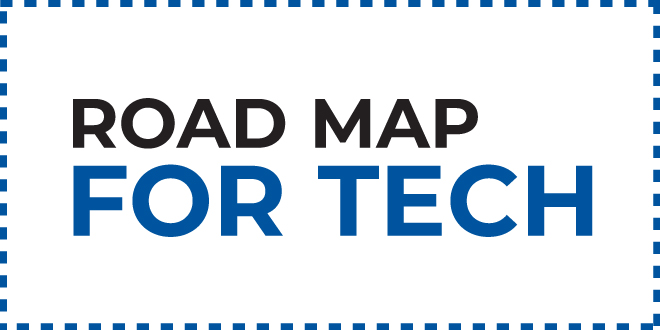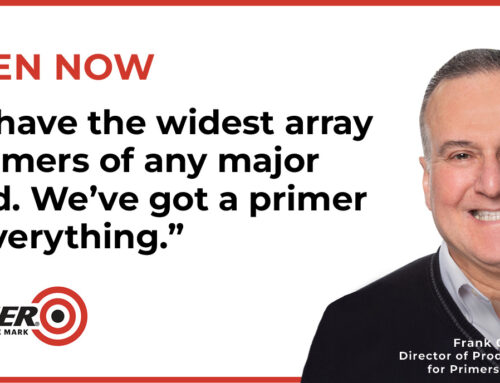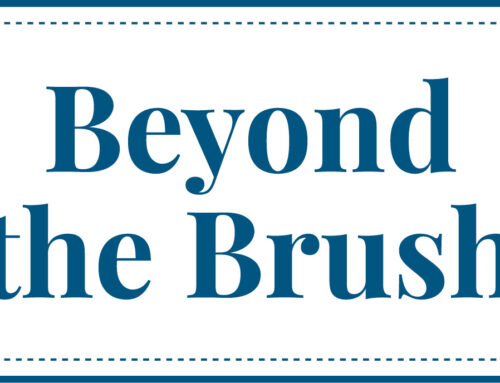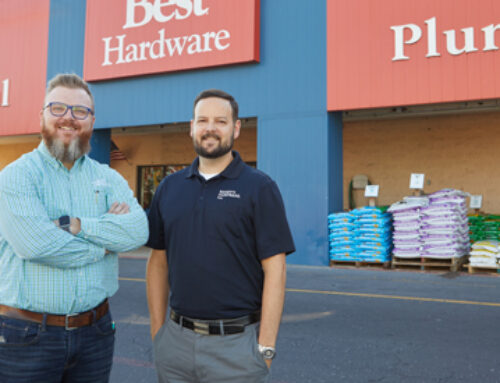At the speed technology changes, it may seem impossible to keep up on what’s best for your operation or even know where to start. It may seem as though the minute you implement the latest and greatest solution, it’s already obsolete. To help you plan your tech journey, Paint & Decorating Retailer spoke with several home improvement retailers who shared their road maps and the routes you can take to successfully bring technology into your operation.
Assessing Your Needs
Like any road trip, starting on the journey toward technology requires planning and begins with asking the question, “Where do I want to go?” To know what types of technology work best for your business, you need to have a clear understanding of your goals as an operation and what you want to accomplish.
Mike Gleason Jr., who is involved in operations for Gleco Paint with three locations in eastern Pennsylvania, uses technology to solve problems in the business. When assessing technology, the team starts by clearly stating the problem they need to solve, Gleason says.
“Then we do our research and go in search of technology that can help,” he says. “Once we do enough research, we have a good idea of what technology we can bring in to solve the issue. Talking to other companies and seeing what works for them has also proven useful.”
Gleason says they added smart light bulbs paired with an automation service in each of the stores to alert the staff when the store receives an email.
“These lightbulbs have made us more efficient because employees don’t feel the need to check the email as often,” he says. “They also don’t feel like they’ll miss an email that is a customer order, which can lead to a horrible customer experience.”
The stores have also added Radio Frequency (RF) guns that are tied to the point of sale (POS) systems to create orders and count inventory, cutting in half the time it takes to do those tasks.
After finding different options, Gleason says they then evaluate if the solution is easy to use and fits into processes and systems already in place.
“Our goal in using technology is to solve a problem while not creating another problem in the process,” he says. “Any technology we implement needs to enhance the work experience at the end of the day.”

Rossi Paint creative manager Carl Lombardi has led the charge for several tech upgrades.
Carl Lombardi, creative manager at Rossi Paint, which has five locations in the greater New York City area, says the team considers how any technology will make the customer and employee experience better.
“If a technology solution will allow our clients and team members to have a better experience, the answer will be yes to that technology,” Lombardi says. “It’s a simple equation for us. If we keep our mindset on our clients and our team, whatever technology we do implement will be that much more impactful.”
Assessing your technology needs can be as simple as improving on what you already have. Since he joined the company in 2008, Mike Bourgeois, store manager of Grunthal Lumber in Manitoba, Canada, has focused on different ways the company can set itself apart from its competition.
One of the ways the company has accomplished the goal of offering something different is through its virtual drafting program. The design and drafting department at Grunthal Lumber can take any house plan and provide a virtual reality (VR) experience for its customers where the customer can walk around and see what their new home or renovation will look like before they ever start to build. Colors, finishes, cabinets, walls, roofs and even furniture can all be customized and revised to meet customers’ needs.
“The virtual reality program reassures customers that they are getting what they want from the design,” Bourgeois says. “Some customers have a hard time visualizing what a space is going to look like, and this program gives them that ability.”
The VR technology was an additional feature of a design program the company was already using. Grunthal Lumber draftsperson Byron Wiebe brought the feature to the attention of company leadership as an opportunity to better serve customers.
“He’s pretty creative and also has the mindset of finding ways to set ourselves apart,” Bourgeois says. “When he found out about this new feature, he did the research and saw how it could benefit our customers and allow us to provide something different.”
“If a technology solution will allow our clients and team members to have a better experience, the answer will be yes to that technology.”
—Carl Lombardi, Rossi Paint
Finding the Right Fit
Once you’ve picked your road trip destination, next comes finding places to stay, dine and explore. The same holds true when planning for technology; once you have a clearer idea of the technology you need, the next step is searching for the right solution and vendor. Lombardi says they also look outside the industry and consider the different ways those technologies can apply to the paint retail operations. They look at technologies from a consumer perspective and brainstorm ideas they would want as customers.

Gleco Paint uses RF guns to create orders and count inventory, saving hours of employees’ time.
“The best technology and process improvements can simply begin with the thought of ‘Wouldn’t it be great if…’” he says. “We have an open-door policy at Rossi’s, so we often generate ideas and find solutions via our discussions with retail staff and management.”
To find the right technology fit for the operation, Grunthal Lumber employs a tech consultant, Steven Lepp, who handles the company’s point-of-sale (POS) and other computer systems. Grunthal Lumber is in the process of updating its POS, and Lepp has been communicating with various POS vendors and setting up meetings between the vendor and management.
“After each presentation, we debrief and discuss the pros and cons of that system,” Bourgeois says. “It’s nice that Steven does the research and sets up these presentations so we can focus on choosing the right option.”
“After implementation, we keep an open dialogue with all stores to make sure the technology is being implemented correctly with proper training and also listen to the feedback of everyone involved.”
—Mike Gleason, Gleco Paint
Bringing Everyone on Board
If your travel partners aren’t on board with the itinerary, your trip can take a detour. Without buy-in from your employees, your efforts to implement technology can hit a major roadblock.
At Rossi Paint, Lombardi says they first consider how their team members will react to a change and keep them in mind with every new advancement.
“Our people are going to be using the new technology daily in their direct work,” he says. “So while it’s hugely important to be customer focused, we don’t lose sight of the people who will be directly interacting with the new technology day-to-day.”
Thorough training and communication is also imperative to getting employees onboard with a new technology. Bourgeois says once the new POS system is in place at Grunthal Lumber, they will offer several training opportunities. The company plans to host lunch and learn sessions where all the employees can enjoy a meal while learning the ins and outs of the new system.
“We have found with our employees that the more hands-on training they can get, the better,” Bourgeois says. “This hands-on learning allows them to pick it up quicker than somebody just trying to explain it to them. They can make mistakes in a controlled environment and learn from those errors.”
Training is key for Gleco Paint and Gleason as well. Technology can come with negative or difficult connotations for some, and Gleason says it’s important to the operation to properly train and educate on how to use a new piece of technology and the benefits it brings to the company. He has found that being patient with the implementation while still having goals helps as well.
“We will usually implement a technology into one store to start and get feedback from those employees,” he says. “If it passes that test, it will then be implemented into all stores. After implementation, we keep an open dialogue with all stores to make sure the technology is being implemented correctly with proper training and also listen to the feedback of everyone involved.”








